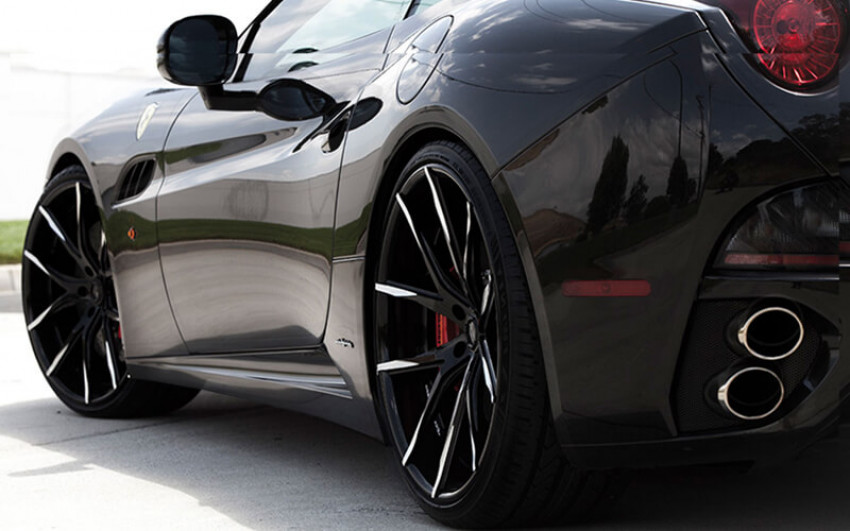
Understanding your tyres becomes inescapable with only four tyres between you and the road surface, each resembling about an impression measured piece of elastic. Mill Tyres understands that not everyone is a tyre expert and that it's easy to get confused in the specialized terminology we use.
Learn about some of the most crucial aspects of tyres, especially when acquiring new ones, to save yourself the headache of searching for new Tyres Frithville.
Contact Patch
Consider your tyres while driving; the contact patch is the small portion of your tyre that really makes contact with the road surface. The size of the contact patch varies with each tyre, but in general, the larger the contact patch, the more grip the tyre has. As a result, tyres used in racing are usually quite broad, allowing for exceptional grip while travelling at high speeds. It's important to keep this in mind when shopping for tyres, as it will help you choose the best option for your needs.
Sipes
These provide stability to your car (hold). The sipes are the notches or cuts in the tyre that, in rainy weather and other foggy situations, quickly push water away from the track, allowing for less slide and faster development. As the track deteriorates, the sipes become shallower and less practical.
Pneumatic stress
Pneumatic stress is the most important factor to consider. We all know how important it is to keep tyres at the recommended pneumatic pressure. The air inside the tyre finally supports the weight of the car. When a tire's capacity to handle the weight of your vehicle is reduced, it becomes a risk, resulting in poor performance, longevity, and security.
Sidewall
While hunting for a new tyre, you may come across tyre enthusiasts and experts referring to the sidewall of their tyres,' or, in any case, poring over an almost unintelligible code to crack on their tyre. Fear not; once understood, the code isn't nearly as difficult to crack, and your tire's sidewall will play an important role in your tyre purchase. Check out the sidewalls or speak with one of our Mill Tyres experts for more information.
Body Piles
The 'body piles' on a tyre refer to the many layers of textures that go into making up the tyre body, which is then held together by the elastic we see on the exterior of the tyre. Most car tyres, for example, have two body piles, whereas large jetliners can have up to thirty! If you're looking for a rock-solid tyre, here is one of the places you should look. Make an appointment with one of our tyre specialists at Mill Tyres to discuss the best option for you.
Why proper tyre maintenance is so crucial?
Just as with other aspects of daily life, if you take care of your car, they will pay attention to your safety as well
Tyre Pressure is one of the most important factors that ensure you are doing your job perfectly. You should check your tyre pressure on a regular basis to ensure your safety. We recommend that you do this every two to four months, which may seem inconvenient at first but could save your life in the long run. Under-inflated tyres are more likely to break down faster, leaving you with less control when out and about, risking both your tyres and your own life expectancy.
How would you determine the exact pressure in your tyres?
To accurately assess your tyre pressure, you should use a pressure gauge. To accurately assess your tyre pressure, you should use a pressure gauge. We strongly advise that you conduct your own examination or request one from our expert staff at Mill Tyre and that's only the beginning, before purchasing ensure that the check you buy is robust and of good quality. You should make sure your tyres are cold before testing your tyre pressure. This is due to the fact that the pneumatic force inside the tyres will briefly rise due to the heat generated by the elastic's development while you drive, resulting in a false reading.
What factors would you consider when determining the proper tyre pressure for your tyres?
The recommended tyre pressure shall be kept in all vehicle owner's handbooks. If you don't have access to your handbook, don't worry; the recommended tyre pressure is also listed on the tyre notice, which is usually found within the driver's entryway or occasionally within the glove box. If you're having trouble finding your tyre pressure, simply go to your local Mill Tyres and one of our employees will gladly assist you. Once the recommended tyre pressure has been put down, which may vary based on the load and the placement of the tyres, you may begin your checks (front and back).
If your tyres need to be inflated, this can usually be done at most gas stations or at your local Tyres Boston Mill Tyre store by one of our tyre specialists.



